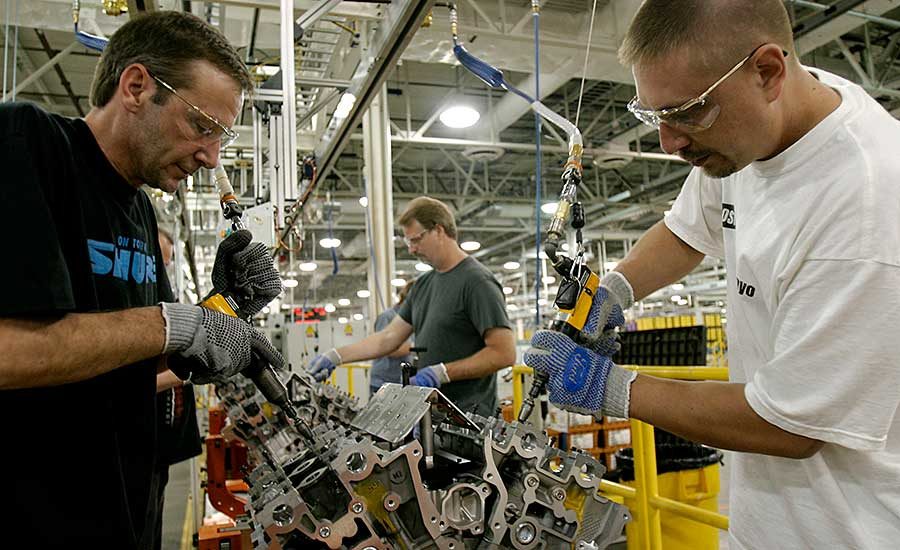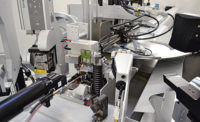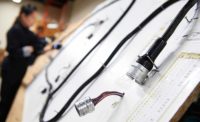With the possible exception of medical device manufacturing, the COVID-19 pandemic disrupted manufacturing in every industry last year. Wire harness manufacturing was no exception. With both automotive and aerospace manufacturing depressed, harness assemblers struggled.
Fortunately, 2021 should be considerably better. “We see growth picking up in the middle quarters of the year, part of which will be driven by [stimulus spending by the federal government],” says Shawn DuBravac, Ph.D., chief economist for IPC and the Wiring Harness Manufacturer’s Association (WHMA). “We expect GDP [gross domestic product] to grow approximately 4.9 percent in 2021 and 3.8 percent in 2022.”
DuBravac is optimistic about 2021, in part, because the 2020 COVID-related recession was not as bad as originally expected. “GDP fell much less in 2020 than we had anticipated,” he says. “Our forecast for June 2020 was for GDP to decline about 6 percent for the year, but it was actually down only 3.5 percent.
“Looking at U.S. GDP last year, you can see that the pandemic started to hit us in the first quarter, and then there was a massive decline in the second quarter. Monetary and fiscal stimulus helped us recover in the third quarter, but then we saw some weakness in the fourth quarter, and that will persist in the first quarter of 2021.”
DuBravac credits federal stimulus payments for easing the sting of the COVID recession. “Ultimately, that stimulus drove up income,” he explains. “If you exclude government transfers, personal income would be down, and it still would be down. But, because of the fiscal stimulus, we have quite strong growth in disposable income.”
The stimulus didn’t just boost consumer spending. It increased savings, as well. “According to the New York Federal Reserve Bank, about two-thirds of the last round of stimulus payments were saved or used to pay down debt,” DuBravac points out. “In the immediate aftermath of the pandemic, states were going into lockdown, and consumers weren’t purchasing services, so you had this big spike in savings.
“And, that’s where we still are. We have abnormal levels of savings right now. Prior to the pandemic, we were looking at savings rates in the 7 percent range. Today, we are saving one-third of our disposable income.”
As more of the U.S. population gets vaccinated, DuBravac predicts that consumer spending will increase, particularly in the service sector. “Spending on goods is up about 5 percent on a year-over-year basis, so we’re above pre-pandemic levels of goods spending, but we’re still well below pre-pandemic levels on spending for services,” he explains. “In the second half the year, consumers will partake in services again. They’re going to go to restaurants. They’re going to go on vacation. We’re going to see a lot of ‘revenge spending’ on services in the second half.”
Federal monetary policy also helped. The cost of borrowing is down significantly, which has enabled manufacturers and other companies to continue to invest in their businesses. “We avoided the spikes in the cost of capital that we saw during the last recession of 2008-09,” DuBravac points out. “In that recession, capital was hard to come by, and it was very difficult for companies to finance anything. That’s not the environment we’re in today.”
Another reason for optimism: Many of the industries important to wire harness manufacturers are now producing at or near pre-pandemic levels. For example, after selling nearly 17 million vehicles in 2019, automakers managed to sell just 14.4 million vehicles in 2020, a 15 percent decrease. Looking ahead, economists anticipate new vehicle sales to hit 16.6 million in 2021 and 16.8 million in 2022.
“New vehicle sales were already slowing down heading into 2020, and we expected sales in 2020 to be below 2019 levels,” says DuBravac. “Obviously, the pandemic really disrupted things, particularly fleet sales. Now, we’re seeing a pretty strong recovery in consumer sales. Prices are up for both new and used vehicles, and that’s helped drive the parts market.”
Defense manufacturing was actually up approximately 0.7 percent from 2019. “Even with a new presidential administration, I don’t expect that defense spending will decrease,” predicts DuBravac.
On the other hand, aerospace manufacturing remains moribund. “That’s going to be a very slow market to recover,” concedes DuBravac. “It will take some time before airlines are ordering new jets. We’ll need to see a major recovery there.”
Manufacturing Jobs
Despite growth in personal income and the stock market, employment continues to lag the recovery. One exception is manufacturing. Through February 2021, manufacturing employment is down only 4 percent from February 2020.
“Employment in electronics and wire harness manufacturing is down about 0.5 percent from a year ago, and we’ll probably close that gap sometime this year,” DuBravac says.
Consumers may have cut back on services during the pandemic, but they didn’t stop buying things.
“Looking back at previous recessions, that’s unusual. Typically, we see manufacturing employment decline, even after the recession ends,” says DuBravac. “It’s not until the end of the recession that manufacturing employment starts to recover.”
Ironically, manufacturers are also experiencing an elevated quit rate. “Manufacturers are seeing a lot of workers leave voluntarily for other jobs,” says DuBravac. “As durable goods manufacturing continues to expand, there will be pressure on wages at least through the first half of this year, and I wouldn’t expect the quit rate to decline until at least the first half of this year.”
While manufacturing employment is improving, employment in the service sector is not. “Many of those jobs are not likely to come back any time soon, even as we start to move back into service spending,” says DuBravac. “Ultimately, we’re looking at a very long recovery in the labor market. It will probably take until about 2024 for employment to recover to pre-pandemic levels.”
Potential Headwinds
Although DuBravac is optimistic about an economic recovery in 2021, he warns harness assemblers that they could face some headwinds.
For example, copper prices have risen quickly in the past few months. “Prices are up 30 percent on a year-over-year basis,” he notes. “We don’t anticipate prices going down, and they could go up even more. We saw historic highs in 2011, and we’re getting close to those.”
Rising fuel and transportation costs are also putting pressure on manufacturers, which might have difficulty passing those costs on to customers. For example, freight rates in the U.S. have increased significantly. “If you look at truck rates, we started 2021 at record levels—$0.65 per mile higher than what they were at the start of 2020,” says DuBravac. “Rates for air freight are also up significantly. Rates in some markets—for example, Hong Kong to North America—are up 100 percent on a year over year basis.”







